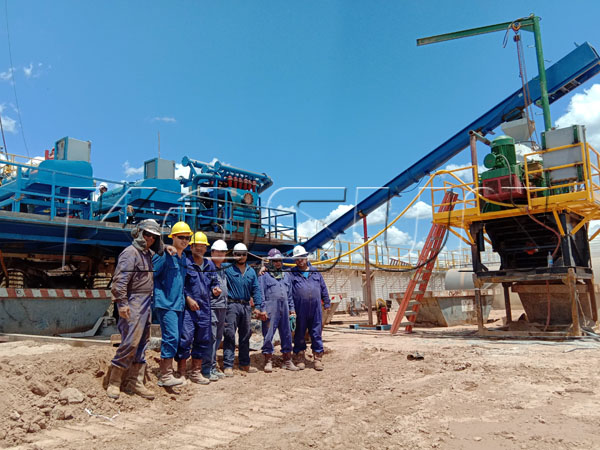The effects of drilling waste treatment mainly include the following three aspects:
1, Primary treatment:
The solid phase contains 6%-10% water (oil-based or water-based), the ph value of the separated water is 6-9, and the COD is generally around 1000mg/L.
2, Secondary treatment:
The solid phase is added with special strains to separate the crude oil and organic matter, and further reduce the COD of the primary separated water. The COD value is generally controlled at 200-400mg/L.
3, Tertiary treatment:
Advanced treatment of sewage, meeting national standard level two or above discharge standard (GB8978-1996, COD<120mg/L) or local standard (COD<60mg/L)
Specific treatment steps for Drilling waste treatment:
According to the drilling site, the application of supporting five-stage solid control equipment (mud linear shale shaker, vacuum degasser, desander, desilter, drilling fluid centrifuge) can maximize the efficiency of solid control equipment, which can avoid Due to equipment failure or improper operation, the mud can be recovered to the maximum extent, which improves the recycling rate of the mud, thereby reducing the amount of mud attached to the cuttings, and truly reducing the waste at the source. minimize.
Tags: drilling waste treatment, five-stage solid control equipment, mud linear shale shaker, vacuum degasser, desander, desilter, drilling fluid centrifuge.
KOSUN- China Solids Control Leader&Drilling Waste Management Expert
Email: sales2@adkosun.com
WhatsApp/Wechat:+86 18792396268
Contact person: Lily Wang
Online consulting:
http://www.kosun.com
http://www.kosuneco.com


